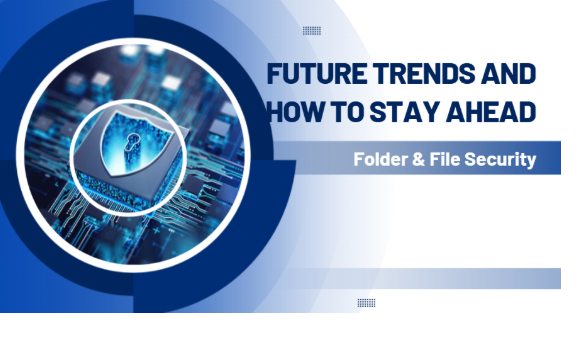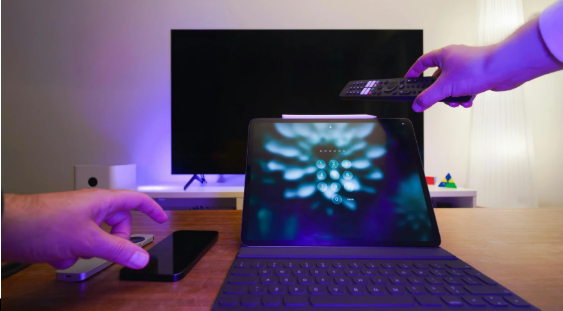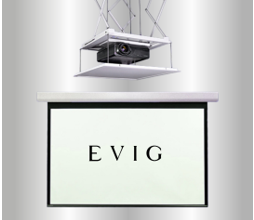Future Trends about Folder & File Security and How to Stay Ahead

By now, you’ve shored up the basics of file security – strong locks, encryption, backups, mindful sharing, the works. You might be feeling pretty secure, and that’s great. But the landscape of tech is always changing, and new challenges are on the horizon. How will folder and file security evolve in the next few years, and how can you be ready? We’ll explore emerging trends like zero-trust security, the rise of AI (on both sides of the fence), and the ongoing cat-and-mouse game between defenders and attackers. The goal isn’t to scare you (we’ve done enough of that) – it’s to empower you. When you know what’s coming, you can plan smarter and stay one step ahead.
Zero Trust: Never Assume, Always Verify
You might have heard the buzzword “zero trust” in security circles. It’s more than a fad – it’s quickly becoming the new normal for data protection. In traditional setups, once you were inside a company network or had logged in, you were implicitly trusted. Zero trust flips that idea: trust no one and nothing by default. Every time you (or a program) try to access a file or system, you have to prove you are who you say you are and that you should have access. It’s like every door inside a building having a lock and ID check, not just the front entrance.
For file security, zero trust means continuously enforcing access rules and not giving any application or user blanket privilege. Even if John in marketing accessed the sales folder yesterday, we’re still going to verify John’s credentials and device today before letting him in again. Companies are adopting this model to contain breaches – even if an intruder slips in, they can’t roam freely. According to IBM, implementing a zero trust framework ensures every access attempt is treated as suspicious until verified, greatly limiting an attacker’s movements. In practical terms, expect to see more multi-factor prompts (“Are you really you? Confirm via phone.”) and granular permissions that only grant the minimum necessary access to each user. For individuals, you can practice a form of zero trust too: don’t automatically trust a new app with access to all your files, and don’t trust devices (like that USB drive you found) without scanning them. It’s a mindset as much as it is a set of tools.
AI and Automation: Your New File Bodyguards
Here’s a twist: the same technology that might keep you up at night (AI that can crack passwords or generate phishing emails) is also one of your best allies in staying secure. The future of folder and file security will heavily feature AI-driven monitoring and automated responses. Imagine software that learns how you and your team typically use files – when you work, what files you access, how much data you usually download. If it notices something way outside the norm, it raises a red flag instantly. For example, if at 3 A.M. your account starts copying hundreds of documents from a server (and you’ve never done that before), an AI system can flag or even freeze the activity on the spot. These are often called UEBA systems (User and Entity Behavior Analytics) – a fancy term for “smart watchers” that know when someone’s acting fishy.
We’re also seeing strides in automated threat response. In the near future, you might not have to wait for an IT admin to manually pull the plug when a breach is detected; the system itself could isolate an affected computer, revoke certain file access across the board, and alert everyone in seconds. It’s like having a digital immune system – quick reflexes to contain damage. On the flip side, cybercriminals are using AI too, to find new vulnerabilities or craft more convincing scams. This means the defenders’ AI has to stay a step ahead. It’s an arms race, but one where you want a few good machines on your side. For most of us, a lot of this AI protection will happen behind the scenes in the products and services we use. Still, it’s good to be aware that when you get an alert saying “we blocked an unusual sign-in to your account,” that’s likely AI at work. And those tools will get sharper and more proactive as we move forward.
Beyond Passwords: New Ways to Lock Files

For protecting files specifically, we might see more use of digital rights management (DRM) and tagging of files. This is where each file carries its own set of rules about who can open it, whether it can be forwarded, or if it self-expires after a certain date. Sound futuristic? It’s already here in some enterprises – for instance, a contractor might download a document but can’t copy text from it or it turns to gibberish after a week. As these technologies trickle down and become user-friendly, even small businesses could apply similar controls. Another development to watch is end-to-end encryption becoming standard in collaboration tools. Apps are increasingly ensuring that only the intended recipients can decrypt a file, shutting out even the service providers from seeing the content. We’re moving to a model where privacy is baked in by design.
And let’s not forget the looming elephant in the room: quantum computing. While it’s not a factor you need to worry about today or tomorrow, futurists predict that advanced quantum computers (maybe a decade or more away) could break many of the encryption algorithms currently protecting our files. It’s like a super lock-picker on the horizon. The good news is, the security community isn’t asleep at the wheel – there’s a push for quantum-safe encryption standards to be in place by the time they’re needed. For now, the takeaway is that security methods will keep evolving. What’s considered unbreakable today might need an upgrade in 10 years, and that’s normal. The best strategy is to stay informed and be ready to adopt new best practices as they emerge.
Read Also: The Ultimate Checklist: What to Look for in a Website Builder
Building a Security-First Culture
Technology alone can’t solve everything – the human element remains crucial. The companies that excel in file security have something in common: a culture of security. That means everyone, from the CEO to the newest intern, understands that protecting data is part of the job. Going forward, expect more organizations to invest in regular training, not the boring check-the-box modules, but engaging sessions that actually reflect current threats (like spotting a cunning phishing email or recognizing a suspicious USB stick left in the parking lot). Given that a lack of employee awareness was a major contributor in many incidents, the focus is shifting to make every staff member a mini firewall of their own.
On a practical level, this cultural shift includes things like encouraging people to report mistakes or weird activity without fear. If an employee accidentally shares a file openly, you want them to immediately raise their hand so it can be fixed, rather than hide it. Companies are learning to reward vigilance – some even run internal challenges (harmless phishing tests, for example) and give prizes to employees who spot the fake email. In the future, we might see security awareness start as early as onboarding and remain a frequent, interactive part of work life.
For you as an individual or manager, fostering this culture means keeping the conversation about security alive. Share news of breaches in your industry as lessons, discuss “what would we do if…?” scenarios with your team, and make sure everyone knows whom to contact if they have a security concern. The more security becomes second nature, the less likely it is that someone will do the digital equivalent of leaving the safe unlocked.
Stay Agile, Stay Updated
Perhaps the most important thing going forward is staying agile. Cyber threats and file protection methods will continue to leapfrog each other. Ransomware, for instance, evolved to target backup files once people got better at backing up; now backup services are evolving to counter that. It’s a constant back-and-forth. Make it a habit to keep your software updated – those updates often patch vulnerabilities that attackers are waiting to exploit. The same goes for any security tools or plugins you use. In the near future, we’ll likely have more seamless updates (systems that auto-update without interrupting you) to ensure everyone is on the latest defense.
Another smart move is to follow reputable security blogs or newsletters relevant to your field. If you’re not the reading type, even skimming headlines from tech news can tip you off, like “Major breach at XYZ caused by file-sharing app flaw” – that’s your cue to check your own tools for similar issues. Many solutions are now adopting machine learning to adapt on the fly. For example, if a new type of malware emerges, modern antivirus might update its detection models automatically via cloud intelligence. Rely on these advancements – they’re there to help – but also maintain a healthy skepticism and curiosity. Ask your software vendors what they’re doing about emerging threats. Challenge your IT team or yourself to think a year ahead: “Are we ready if this new kind of attack becomes common?”
In conclusion, staying ahead in folder and file security is about combining timeless best practices with forward-looking adjustments. The fundamentals give you a strong foundation. On top of that, adopting things like zero trust principles, leveraging AI-driven tools, preparing for the passwordless/quantum/whatever-comes-next era, and nurturing a security-aware culture will ensure you’re not caught off guard. The specifics may change – today it’s phishing links and cloud misconfigurations, tomorrow it might be AI bots and quantum hacks – but if you build a mindset that’s always ready to learn and adapt, you’ll handle it just fine.
To wrap up this series: file security is a journey, not a destination. Keep your guard up, stay informed, and treat it as an ongoing part of doing business (and life) in the digital world. The peace of mind you get from knowing your data is safe is well worth the effort. After all, in the race between security and threats, you only have to be a little bit ahead to win. Let’s make sure you stay in front.
FAQs:
What is “zero trust security” in simple terms?
Zero trust is a cybersecurity approach that says: “Never trust, always verify.” In simple terms, it means no one is trusted by default, even if they’re inside your network or have logged in before. Every access to a file or system must be authenticated and authorized, every time. For example, if you’re trying to open a confidential file at work, zero trust would ensure that at that moment, the system checks: Are you really who you claim to be (perhaps via a login or 2FA)? Do you have permission to access that specific file? Is your device in a secure state? Only if the answer to all is yes do you get in. It’s like having a guard at every door rather than just the building entrance. The benefit is that even if an attacker compromises one account or one part of the network, they can’t pivot unchecked to everything else. For individuals at home, you can adopt a mini zero-trust mindset by not automatically trusting new devices or apps – verify and limit access. It’s a bit of skepticism as a security policy: assume breach and operate accordingly.
How can AI help protect my files?
AI can be a game-changer for file security. One big use is behavior monitoring. AI systems can learn how you normally use your files – when you log in, which files you access frequently, how large your typical data transfers are, etc. With that baseline, the AI can spot unusual behavior that might indicate a threat. For instance, if malware on your PC starts encrypting all your files, an AI-driven security program could notice “hey, 100 files were modified in the last minute, that’s not normal” and flag it or stop it. AI is also used in detecting suspicious logins (by analyzing things like time, location, device used) and preventing account takeovers. Another area is content analysis: AI can scan documents and flag if sensitive info (say social security numbers or credit card numbers) is being stored or sent in ways it shouldn’t, which helps with data loss prevention. And when it comes to responding, AI can automate actions – like automatically isolating a user account that’s behaving abnormally until an administrator can review. In short, AI acts as a tireless, always-alert security guard who can react in milliseconds. For everyday users, many of these AI protections are built into modern antivirus software, cloud services, and even email spam filters – they’re working quietly in the background to keep you safe.
Do I need to worry about quantum computers cracking my file encryption?
Not just yet. Quantum computers are a developing technology that, in theory, could one day break a lot of our current encryption methods much faster than a normal computer could. Some experts warn that a powerful enough quantum computer might be able to crack today’s common encryption (like RSA or ECC, which protect many files and communications) in a matter of hours or days, whereas a normal computer would take millions of years. The timeline for this is unclear – optimists say maybe in a decade or so, pessimists say even sooner – but as of 2025, no one has demonstrated a quantum computer that can do that. The important thing is, the world isn’t going to be caught completely off-guard. Researchers are already developing post-quantum encryption algorithms (encryption that even quantum computers can’t easily solve). In fact, standards bodies like NIST have been working on quantum-resistant encryption and have started recommending some new algorithms. By the time quantum decryption becomes a real threat, we’ll likely have migrated to new encryption standards (much like we moved from weaker algorithms to stronger ones in the past). For now, continue using strong encryption for your files – it’s effective against all current adversaries. Keep an ear out in the tech news over the coming years for developments in “quantum-safe” or “post-quantum” cryptography. But there’s no need to lose sleep over your encrypted files suddenly becoming an open book overnight; it will be a gradual transition and you’ll have time to adapt.
How can I get my team (or family) to take file security seriously?
Building a security-conscious team or household is all about education and empowerment, not scaring or shaming. Start by sharing a few eye-opening, relatable stories (did someone in your industry have a big leak? was there a news story about a CEO getting phished?). People often think “it won’t happen to me” – real examples help dissolve that false comfort. Next, turn it into a collective mission: make it clear that security is everyone’s responsibility and that it protects all of us. Offer practical tips in bite-size doses. For example, one week you might show how to check if a Google Drive link is restricted to the right people. Another week, you might run a fun quiz on spotting fake emails. Encourage questions and don’t make anyone feel dumb for not knowing something – the tech world changes fast, we’re all continually learning. If this is in a workplace, it can help to get leadership buy-in: when bosses highlight security in meetings or actually attend the training themselves, it sends a message that it matters. Positive reinforcement works wonders too: praise or reward team members who proactively improve security (like someone who suggests “hey, maybe we should clean up this old data” or who reports a suspicious incident immediately). The goal is to create a culture where being mindful of file security is just part of the routine, like locking your computer when you step away or using the secure share option without even thinking about it. Over time, as people see that these practices actually prevent issues and are not that hard to do, it becomes second nature.
Can I ever be 100% secure, or is there always some risk?
The honest answer: absolute 100% security is a myth – but you can get very close to foolproof with layered defenses and good habits. There’s always a theoretical risk (because technology can surprise us, and humans can make mistakes). However, the aim is to reduce the risk to such a minimal level that the odds of a breach affecting you are near zero. Think of it like home security: no home is totally impenetrable (given enough time and resources, a burglar could find a way), but you can make your home so hard to break into – with locks, alarms, cameras, perhaps a guard dog – that burglars don’t even bother trying. Similarly, by using strong unique passwords, encryption, backups, secure networks, and staying alert to threats, you become a very hard target. Most attackers will move on to look for an easier victim. And if something unprecedented does happen, your multiple safeguards (like backups in case of ransomware, or 2FA in case your password gets out) ensure it’s a small incident, not a catastrophic one. So, while no system can boast 100% perfection, you can reach a point where you feel peace of mind. At that stage, you’re basically as secure as realistically possible, and that’s the sweet spot we should all aim for. Keep striving for that, and remember that security is a continuous process – much like personal health, it’s about ongoing good practices.



